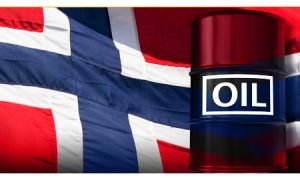 This piece is the latest salvo in my on-going public debate with Norway’s Ministry of Finance, that lays out the investment strategy for its $750bn sovereign wealth fund, now the biggest in the world. It appears in today’s Aftenposten in response to comments by the Deputy Minister of Finance in the same newspaper. The next paragraph lays out the context of the discussion and my opinion piece starts in the paragraoh after.
This piece is the latest salvo in my on-going public debate with Norway’s Ministry of Finance, that lays out the investment strategy for its $750bn sovereign wealth fund, now the biggest in the world. It appears in today’s Aftenposten in response to comments by the Deputy Minister of Finance in the same newspaper. The next paragraph lays out the context of the discussion and my opinion piece starts in the paragraoh after.
In an opinion piece and interview that appeared in Aftenposten, Norway’s biggest newspaper, on Tuesday the 13th of August, I laid out why the present strategy of the Oil Fund was flawed and what needed to change. This was followed by a presentation of our report making the case for these changes at the Finance Ministry on the 15th of August. After an interview in the same paper and a radio dabate on the report, the Finance Ministry issued another more formal response to our report on Monday the 19th of August. The deputy minister of Finance in charge of the Oil Fund, Hilde Singsaas, took to the papers to defend the present starategy as roubust. She acknowledged that GPF should invest more in developing economies and make green investments, but said there was no need to hurry. My reponse to this appears in today’s Aftenposten with the English original below.
Norway’s future is intimately linked to how well the GPF – its $750bn sovereign wealth fund, already 150% of GDP and rising – is run. Under the 4% spending rule, as much as 15% of all government spending already comes from the GPF. Hence, returns on GPF investments and the final size of the GPF are probably more important for Norway’s economy than any other single policy. Yet, there is little scrutiny of the merits of the GPF’s investment strategy, which is deeply flawed.
Secretary Singsaas is correct to say that GPF strategy should be based on evidence and my report provides exactly the kind of analytical basis that is necessary to improve the present approach. She agrees that there is a financial case for the GPF to make more investments in the green economy and in developing countries, but suggests incremental actions that are too little too late. The central recommendations of my report are not addressed.
She claims the total exposure of the GPF to oil and gas is 6%, but I show that it is more than 50%. How?
What really matters to Norway is the final size of the GPF once oil revenues run out. This depends on how much oil and gas Norway can sell and at what price. On current projections, the GPF is expected to be about $1.5 trillion, double its present value of $750bn, by 2025. If action to tackle climate change raises the price of emissions or limits their quantity, as is likely, this amount would be much smaller.
Hence, more than half of the final expected final value of the GPF is exposed to the price of oil falling or the price of emissions rising, not just 6%. Adding to this by making ANY investments in oil and coal is foolhardy. So yes, the GPF must sell all carbon heavy shares. But my central point is that it needs to make large green investments. These will rise in price and profitability as action is taken to tackle climate change and reduce the risk of the final value of the GPF being much smaller than we expect.
Singsaas says the GPF is increasing investments in developing countries from 6% to 10%; but their share of world GDP is already 50% and rising.
Explaining away low investments in fast growing developing economies by saying that stock markets are underdeveloped ignores the other attractive investment opportunities that abound. That the GPF will never be able to generate the 4% return the parliament expects, without such investments, is also ignored.
The GPF’s decision to only invest in liquid stock and bond markets, that Singsaas invokes to justify overexposure to sclerotic OECD economies, is the biggest flaw in its approach. Investing in growth (private) equity where stock markets are underdeveloped and in illiquid infrastructure is exactly what other long-term investors, such as Singapore’s wealth funds, do very profitably. The government appointed Strategy Council urged the GPF to do the same, but was overruled by the ministry.
Unlike what Singsaas says, current GPF strategy is anything but robust. It guarantees poor returns, while taking unacceptable climate-related risks and tying Norway’s future to that of troubled, over-indebted and ageing OECD economies. Norwegian citizens deserve better, and must demand change. What better time than now?
Sony Kapoor is Director of the International Think Tank Re-Define and a Senior Visiting Fellow and Strategy Adviser at the London School of Economics
